Save the Date: Simon Institute Symposium 2014
To find out more, visit the Simon Institute website.
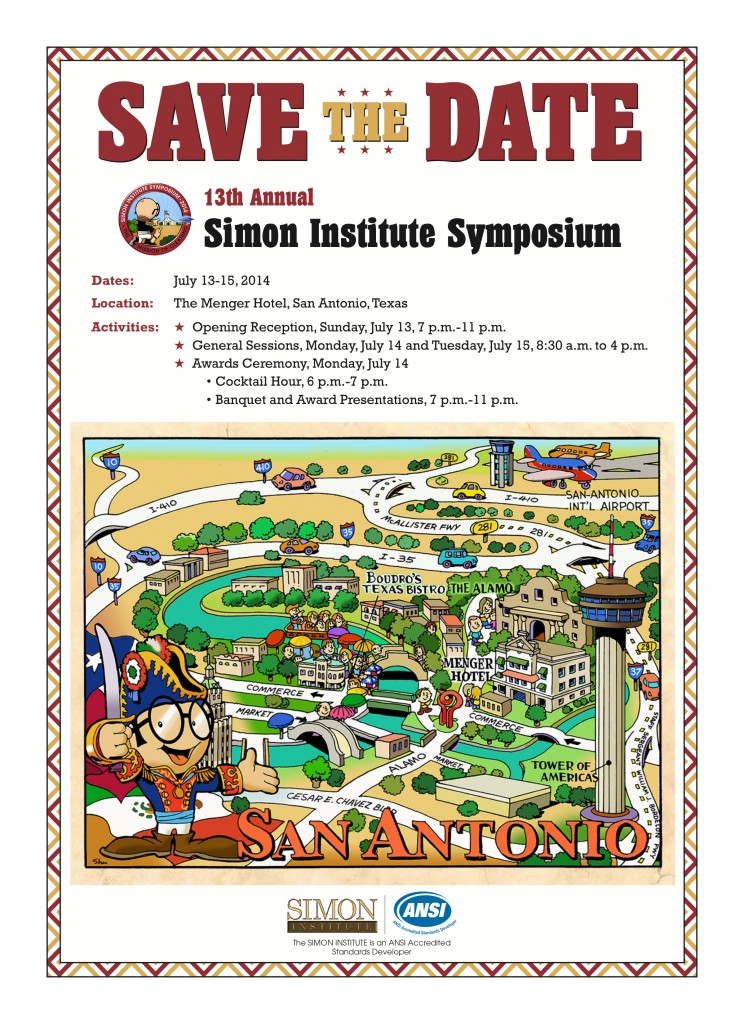
To find out more, visit the Simon Institute website.

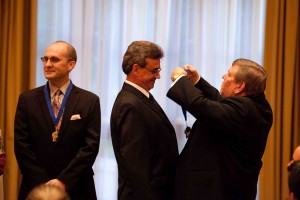
Outstanding Cleaning Worker Award Ceremony at the Simon Institute Symposium, 2011.
For the last several of years, the Simon Institute has been conducting an Outstanding Cleaning Worker of the Year recognition ceremony for cleaning workers, who have been nominated by someone within their organization. 2.5 million people earn their living in the U.S. as janitors, custodians and housekeepers. Most toil through their shift, day after day with little recognition for their contribution to the orderly operation of every business.
Once again, the Simon Institute is planning on conducting this ceremony during this year’s (OS1) Awards Banquet, at the annual Simon Institute Symposium, July 14, 2014 at the Menger Hotel, San Antonio, TX.
We encourage cleaning organizations who nominate cleaning workers, to bring them along with you to the Simon Institute Symposium. If they are in attendance, they will be presented with their own Outstanding Cleaning Worker Medal of Honor at the (OS1) Awards Banquet.
The Simon Institute is now accepting your nominations online. Just click the button below to nominate a cleaning worker from your organization.
[button link=”http://simoninstitute.org/outstanding-cleaning-worker-nomination/” window=”yes”]Submit Nomination [/button]
from American School and University
GCA Silver Award Higher Education: University of Michigan, Ann Arbor, Michigan
Total number of students: 43,400
Total square footage maintained: 15 million
Total number of custodians: 365
Total annual cleaning budget: $22 million
Green cleaning team members: Plant Building & Grounds Services (PBGS): John Lawter, Assoc. Dir.; Colette Donner, Carie Kloack, Henry Musial, Area Mgrs.; Kristin Brancheau, Business Mgr.; Bill McAllister, Garage Sr. Supervisor; Jim Ginnaty, Training Mgr.
The University of Michigan’s Plant Building & Grounds Services (PBGS) department began green cleaning in May 2009 with the introduction of the OS1 (Operating System One) cleaning program to campus.
Although the impetus for this change from a traditional zone-cleaning system was to increase building cleanliness in light of declining budgets, they have embraced the OS1 philosophy of “Clean first for health, then for appearance.” Integral to the success of the transition to green cleaning was the engagement of the campus community, including custodians, facility managers, faculty, administrators, students, staff and visitors…
[button link=”http://asumag.com/green-cleaning-award-schools-amp-universities/gca-silver-award-higher-education-university-michigan-” style=”info” window=”yes”]Click here for full story[/button]
Click on the link below to read the November 2013 issue of The Cleaning Gazette. The Cleaning Gazette is the official publication of the Cleaning Industry Trainer’s Guild.
 The education facilities industry is on track to manage about one-third of the total cost of ownership of its facilities with the entry of one of its major supplier advocates into the American national standards process. The Simon Institute (SI) — the non-profit choice for the custodial, janitorial and housekeeping
The education facilities industry is on track to manage about one-third of the total cost of ownership of its facilities with the entry of one of its major supplier advocates into the American national standards process. The Simon Institute (SI) — the non-profit choice for the custodial, janitorial and housekeeping
industry in the US — recently became a member of the American National Standards Institute during World Standards Week in Washington D.C. October 22-23, 2013.
World Standards Week is an annual gathering of US standards developers from all business sectors of the US economy to develop policy and strategy for adapting to the changing world economies by hastening innovation through technical standards development. From this process a national standard for custodial services in
the education industry will emerge from a consensus process that will make a leading practice document suitable for adoption into public law. The word “consensus” is important since it represents a common viewpoint of those parties concerned with its provisions, namely producers, users, consumers and general interest groups
On November 1st SI initiated the process to become a registered standards developing organization (SDO). SDO’s provide the following benefits for any industry, in any country:
The entry of the Simon Institute into the ANSI process follows the trajectory of a 16-year University of Michigan-led national strategy to manage infrastructure costs of the $300 billion US education facilities industry through the American national standards process. Of this $300 billion — which includes large university-affiliated hospitals — about $75 billion is spent on cleaning — 90 percent of that cost; labor.
The objective of this is to put in place a permanent and enduring structure for continual leading practice development that will net TCO by $3 billion to $6 billion per year in an environment of rising risk,
complexity and regulatory conformity cost. In the long run, this process always results in more effective use of money, management of worker risk, and a hygienically safer built environment.
There is a subtle reciprocity between innovation and standardization. Standards stimulate the innovation of products, services and systems just as innovation drives the need for standardization. In some cases, a standard fosters innovation by establishing a baseline for design and performance that will satisfy user requirements.
The Simon Institute is the continuation of an organization founded in 2002 by The Boeing Company to identify, benchmark and incorporate best practices in facility custodial operations. The driving force of the original meeting was The Boeing Company’s initiative to qualify for the Malcolm Baldrige Quality Award. Several world class organizations, all users of ManageMen’s Operating System One (OS1), were invited to meet with Boeing at the largest building in the world, the Everett Washington Boeing plant, to share or debate best practices in janitorial operations. At the conclusion of the symposium the group decided to continue meeting annually in a joint project to develop improved industry standards.
A well-conceived standard provides flexibility that suppliers or manufacturers can vary features, function, or price to establish their own niche in the marketplace. These variances can help to elevate user expectations of a product or service, thus raising the bar for future editions of the applicable standard. In other markets and technologies, innovation comes first. A single set of performance or design criteria are agreed upon and serve as the baseline for ongoing improvements.
A standard becomes the physical documentation of an agreed-upon solution that has already been time-tested and proven.
The next steps are as follows:
1. Public announcement of Simon Institute ANSI membership (this announcement)
2. Development of By-Laws and Consensus procedure
3. Establish technical committees
4. Write the standard
5. Release for first public review
6. Revise in response to public comments and re-post for 2nd public review
7. Revise in response to public comments in 2nd public review
8. Formally adopt the standard and announce its release in the ANSI Standards Action publication that is made available weekly to the public.
9. Promote adoption and support with conformity and accreditation programs.
Depending upon the process preferred by the Simon Institute, the foregoing process may be modified.
The most surprising standard of all may not ever be written but may always lie in the public eye. Our industry is engaged in policy initiatives that require us to confront the cost of value-delivery that is very expensive relative to available resources. All levels of government are under pressure to use intergovernmental collaboration to spread the cost of managing educational facilities across wider tax bases; capitalizing economies of scale or economies of skill inherent in some services. Our industry must hasten its effort to write its own rules, or we will have them written for us.
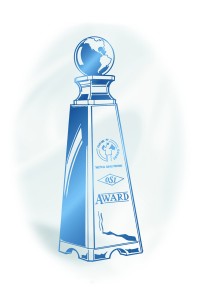
Best (OS1) Audit
Sandia National Laboratories – Albuquerque, NM
Rookie of the Year
USPS – Salt Lake City Facility
Best Cleaning Quality Improvement
GMI Building Services, Inc.
Innovation
Michigan State University
Los Angeles Habilitation House
Workloading
University of Michigan
Peer Influence
Bruno Niklaus – Unger Enterprises
(OS1) Trainer of the Year
Mary Clark – Michigan State University
Communications
Wake Forest University
Safety and Health
Michigan State University
Environmental
The University of Texas at Austin
Training Program
The University of Texas at Austin
Certification
Los Angeles Habilitation House
Best Cleaning Program
Sandia National Laboratories – Albuquerque, NM
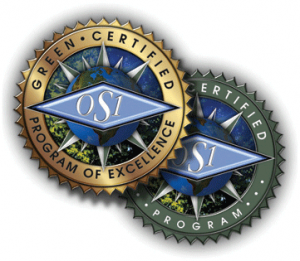 (OS1) Green Certified Awards for 2013 (Audit Scores 80%-89%)
(OS1) Green Certified Awards for 2013 (Audit Scores 80%-89%)KBM Facility Solutions
GMI Building Services
The University of Texas at Austin
University of Michigan
Wake Forest University
Michigan State University
Mt. San Antonio College
Sandia National Laboratories – Albuquerque, NM
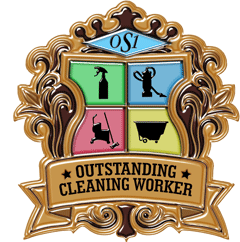
[fbshare type=”button” float=”left”]
[linkedin_share style=”none” float=”left”]
[twitter style=”horizontal” float=”left”]
The time is fast approaching when we will be recognizing outstanding cleaning workers. Approximately two-and-a-half million people earn their living in the U.S. as janitors, custodians and housekeepers. Most toil through their shift, day after day with little notice of their contribution to the orderly operation of every business.
In 2009, The SIMON INSTITUTE decided to honor outstanding cleaning workers during the Simon Institute Symposium each year. They commissioned a beautiful medal to be designed for the occasion. George Dansie and Shu Yamamoto (ManageMen’s Cartoonist), created a special medal that is a work of art to honor the best of our best cleaners.

John Walker, ManageMen, Inc., presents an Outstanding Cleaning Worker Award at the 2011 (OS1) Users Symposium.
At the symposium in Deerborn, Michigan this year, we will honor the Outstanding Cleaning Workers in America for the fifth year in a row. Now is the time for your organization to fill out the application form for the recipient your organization wants to recognize. Organizations are invited to honor more than one medal recipient.
Medals will be presented during the Cleaning Industry Awards Banquet, Monday, July 15 at the Dearborn Inn – A Marriott Hotel. Cleaning workers who attend the banquet will be presented the award in a special medal ceremony following the Pinnacle Award for Lifetime Achievement.
The cleaning worker’s “bio” will be read to the group, their photo will be displayed on the screen and Renae and John Walker of ManageMen will present the awards.
Among the criteria for selection employees must display a commitment to professional pride and care; be self motivated and accountable; demonstrate a positive; conscientious and considerate attitude toward customers, fellow employees and others; provide continual outstanding performance of any kind within the campus of facilities that build and support the assembly process; and excellence in the performance of job duties.
If you are unable to send outstanding cleaning worker’s that you wish to honor in your organization, you may conduct your own medal ceremony at your location. Many organizations are large, with hundreds, even thousands of cleaning workers, the SIMON INSTITUTE decided not to limit the number of medals for which an organization may apply.
